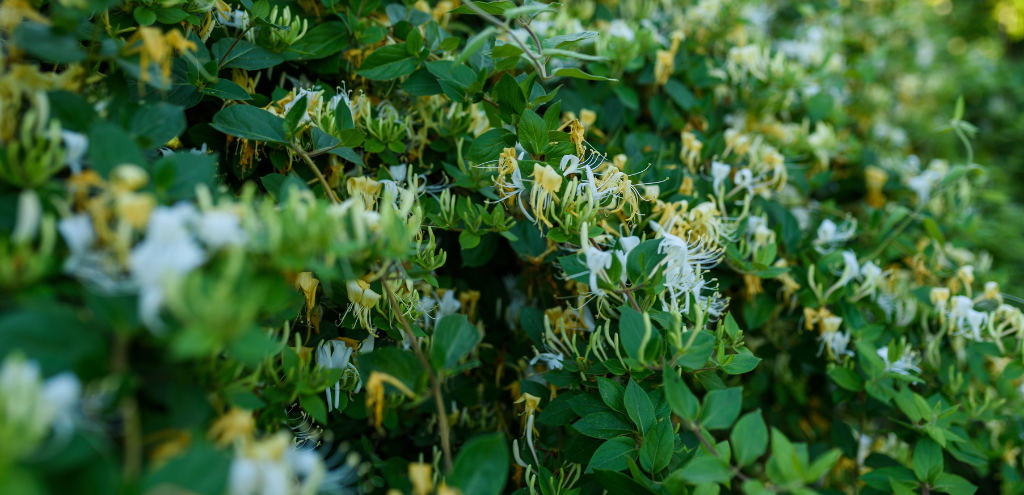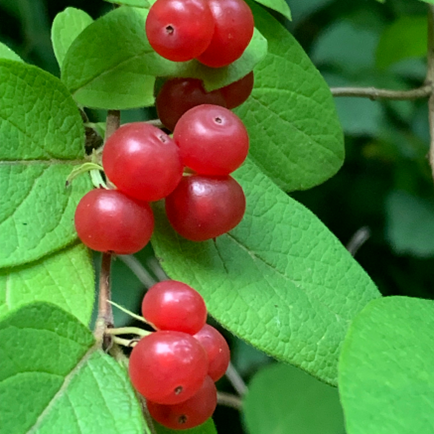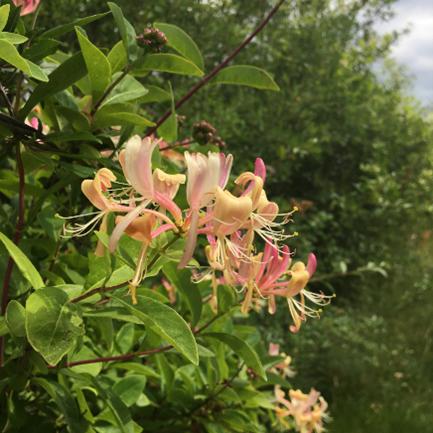THE LEAFLET

Most UN-Wanted: Bush Honeysuckle
The Casey Trees’ most unwanted invasive plant species series continues with week three looking at another highly problematic, tree-harming plant: Bush Honeysuckle.
With just two more weeks to go, we will be looking at the invasive plant species our staff encounters most in the field. Invasive species are one of our urban forest’s largest threats. These non-native plants cause stress and environmental harm as they lack natural predators and competition.
Bush Honeysuckle harms trees and native plants within the DMV by creating dense, tangled thickets that reach up to 15ft in height. These thickets block out resources such as sunlight, soil nutrients, and soil moisture to native plants and trees. Over time, Bush Honeysuckle causes long-term deterioration of forests. It can spread quickly via the dissemination of its berries by local wildlife.
North America does have native Bush Honeysuckle; the prevalence of non-native Bush Honeysuckle like Amur (Lonicera maackii), Morrow’s (Lonicera morrowii), and Tatrian (Lonicera tatarica) will overtake native species by blooming earlier giving them a head start on out-competing for resources and some studies saying these invasives release toxins that limit the growth of native Bush Honeysuckle.
How to spot Bush Honeysuckle:
When removing Bush Honeysuckle, it is important to differentiate between native and non-native species. Native species are identified by their location and appearance, with the plant preferring dry, rocky soil and featuring short bushes with only yellow flowers. Non-native Bush Honeysuckle prefers moist soil.
Leaves differ based on invasive Bush Honeysuckle species; however, all have grayish-brown stems with an opposite leaf arrangement. Amur Honeysuckle’s leaves are dark, glossy, slightly hairy with oval tapering leaves that are 2-3 inches in length. Morrow’s Honeysuckle leaves are gray-green and hairy. Lastly, Tatarian Honeysuckle leaves are blue-green, hairless, and dull.
Non-native Bush Honeysuckle berries range in color from red to yellow. Morrow’s and Tatarian Bush Honeysuckle ripen in mid-summer while Amur Bush Honeysuckle ripen by mid-autumn.
How to remove Bush Honeysuckle:
Like English Ivy and Porcelain Berry, Bush Honeysuckle can be removed; however, it is best to remove this invasive species in the winter when other vines such as poison ivy are dormant. If you are removing the plant outside of the winter months, it is recommended to be removed before late spring to use flowers for identification and prevent berries from dropping. When removing, make sure to wear long sleeves and pants along with protective gloves to ensure protection from other plants.
It is best to remove Bush Honeysuckle as soon as it is detected, the earlier it is spotted the better. Repeated removal sessions will be necessary as seeds and roots may still be in the soil. During removal, make sure to pick up any berries to prevent them from spreading seeds.
It is recommended to lift the stems away from the ground or plant it is covering and use pruners, loppers, or shears to cut at stems. Follow by removing the stems by hand. Bush Honeysuckle can resprout if any stems or roots are left behind. Make sure all plants covered by the invasive are clean from the invasive stems, flowers, and berries.
Casey Trees continues to work with partners to remove invasive species from sites throughout the DMV. Join us in continuing the fight against invasive species by following these steps to remove Bush Honeysuckle in your own yard. Additionally, join us for our upcoming invasive removals that take place during our winter and summer tree care seasons.



